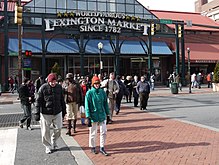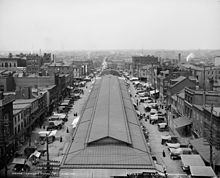
Jessup is an unincorporated community and census-designated place in Howard and Anne Arundel counties, about 15 miles (24 km) southwest of Baltimore, Maryland, United States. Per the 2020 census, the population was 10,535.

Fell's Point is a historic waterfront neighborhood in southeastern Baltimore, Maryland, established around 1763 along the north shore of the Baltimore Harbor and the Northwest Branch of the Patapsco River. Located 1.5 miles east of Baltimore's downtown central business district, Fells Point is known for its maritime history and character.
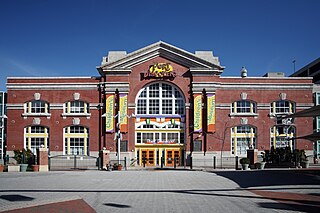
Port Discovery Children's Museum is a non-profit institution located in the historic Fish Market building in Baltimore, Maryland's Inner Harbor. It is 80,000 square feet and has three floors of exhibits and programs designed to be interactive and educational. It receives more than 265,000 visitors annually. The museum's focus is on children ages birth through 10 and their caregivers.

Pimlico Race Course is a thoroughbred horse racetrack in Baltimore, Maryland, most famous for hosting the Preakness Stakes. Its name is derived from the 1660s when English settlers named the area where the facility currently stands in honor of Olde Ben Pimlico's Tavern in London. The racetrack is nicknamed "Old Hilltop" after a small rise in the infield that became a favorite gathering place for thoroughbred trainers and race enthusiasts. It is currently owned by the Stronach Group.
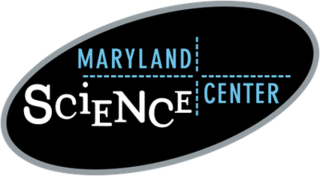
The Maryland Science Center, located in Baltimore's Inner Harbor, opened to the public in 1976. It includes three levels of exhibits, a planetarium, and an observatory. It was one of the original structures that drove the revitalization of the Baltimore Inner Harbor from its industrial roots to a thriving downtown destination. In 1987, an IMAX theater was added, but the museum continued to show its age as the end of the 20th century approached. In May 2004, a large addition to the property was opened, and the modernized hands-on exhibits now include more than two dozen dinosaur skeletons. Subjects that the center displays include physical science, space, and the human body.

Power Plant Live! is a collection of bars, restaurants and other businesses in the Inner Harbor section of downtown Baltimore, Maryland. It was developed by The Cordish Companies and opened in phases during 2001, 2002, and 2003. The entertainment complex gets its name from the nearby "Power Plant" building, three blocks south on municipal Pier 4 on East Pratt Street facing the Inner Harbor, which was also later re-developed by Cordish.
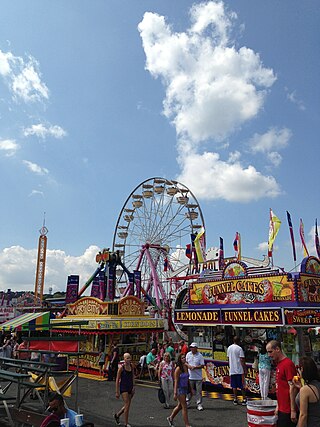
"The Maryland State Fair is an annual event held in the state of Maryland. It is hosted at the Maryland State Fairgrounds, located near York and Timonium roads in Timonium. As of 2006, the fair has been traditionally scheduled for a duration of 11 days. It typically begins in late August and concludes around Labor Day."

The city of Baltimore, Maryland, has been a predominantly working-class town through much of its history with several surrounding affluent suburbs and, being found in a Mid-Atlantic state but south of the Mason-Dixon line, can lay claim to a blend of Northern and Southern American traditions.
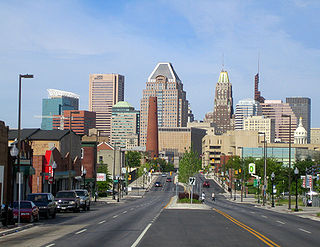
Downtown Baltimore is the central business district of the city of Baltimore traditionally bounded by Martin Luther King, Jr. Boulevard to the west, Franklin Street to the north, President Street to the east and the Inner Harbor area to the south.
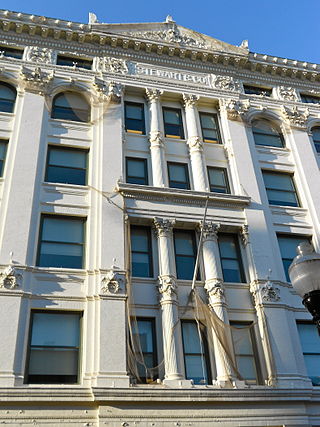
Howard Street is a major north–south street through the central part of the city of Baltimore, Maryland. About 2+1⁄2 miles (4 km) long, the street begins at the north end of I-395 near Oriole Park at Camden Yards and ends near Johns Hopkins University, where it splits. To the right, it becomes Art Museum Drive, the one-block home of the Baltimore Museum of Art. To the left, it becomes San Martin Drive, which winds road along the western perimeter of the Johns Hopkins University campus and ends at University Parkway. Howard Street is named in honor of former Maryland governor John Eager Howard. Two other streets in Baltimore, John and Eager Streets, are also named after him.
St. Paul Street and Calvert Street are a one-way pair of streets in Downtown Baltimore and areas north. The streets, which are part of Maryland Route 2, are two of Baltimore's best-known streets in the downtown area.

Schmidt Baking Company is a bakery in Baltimore, Maryland, U.S. The company makes Schmidt's Blue Ribbon and Schmidt's Old Tyme Breads and, as a licensee of the Quality Bakers of America Cooperative, bakes and distributes Sunbeam Bread in its territory.
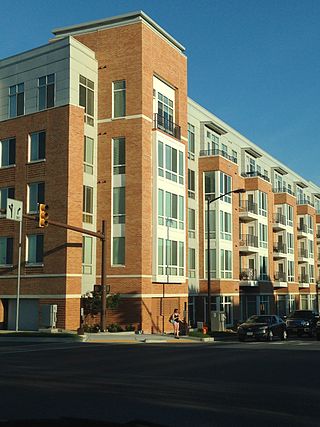
Town Center is one of the ten villages in Columbia, Maryland, United States, first occupied in 1974. The Town Center is a non-contiguous, diverse area, and the most urban-like, ranging from multi-level high density apartments, homes and office buildings to single family homes.

Baltimore is the most populous city in the U.S. state of Maryland. With a population of 585,708 at the 2020 census, it is the 30th-most populous city in the United States. Baltimore was designated an independent city by the Constitution of Maryland in 1851, and is currently the most populous independent city in the nation. As of the 2020 census, the population of the Baltimore metropolitan area was 2,838,327, the 20th-largest metropolitan area in the country. When combined with the larger Washington metropolitan area, the Washington–Baltimore combined statistical area (CSA) has a 2020 U.S. census population of 9,973,383, the third-largest in the country.

The "Henry Fite House", located on West Baltimore Street, between South Sharp and North Liberty Streets, later known as Hopkins Place, in Baltimore, Maryland, was the meeting site of the Second Continental Congress from December 20, 1776 until February 22, 1777.

Hello Robin is a woman-owned bakery with two locations in Seattle, in the U.S. state of Washington. The original bakery opened on Capitol Hill in 2013. A second location opened at University Village in 2020.

Faidley's Seafood is a seafood restaurant in Lexington Market in Baltimore, Maryland. It is one of the oldest restaurants of its kind in the Chesapeake Bay area. The restaurant is known for its lump crab cakes.
